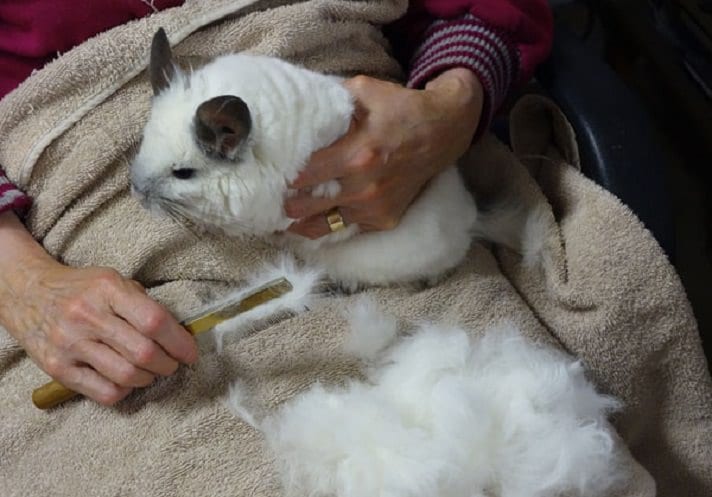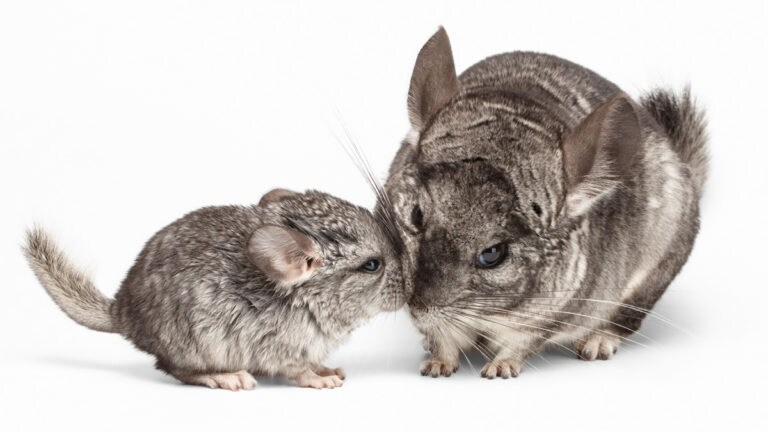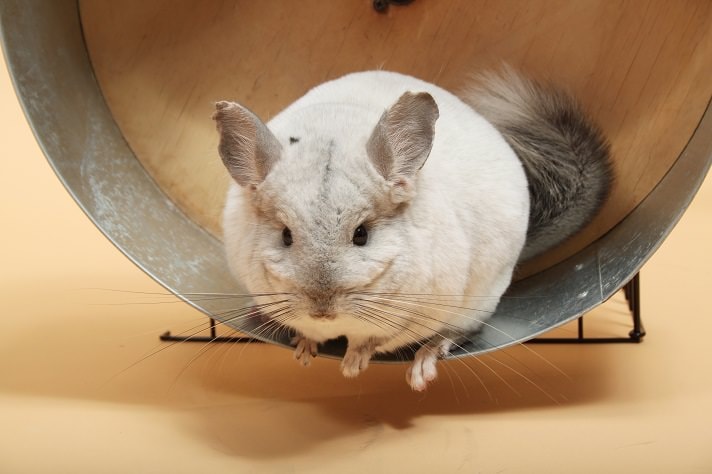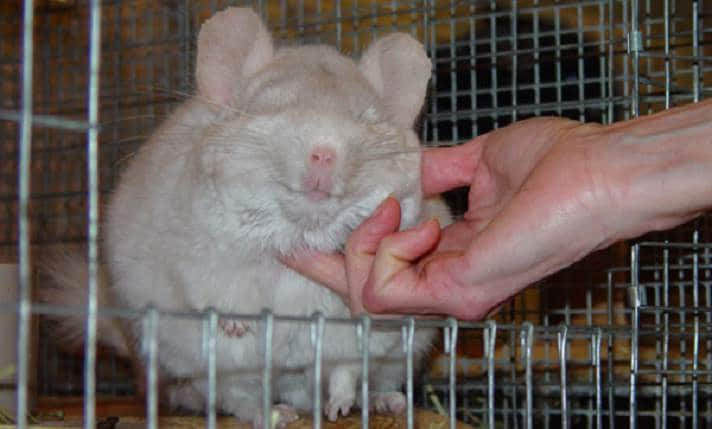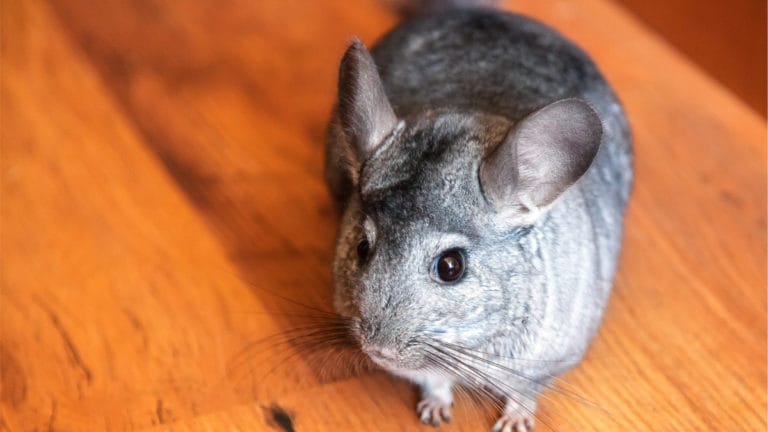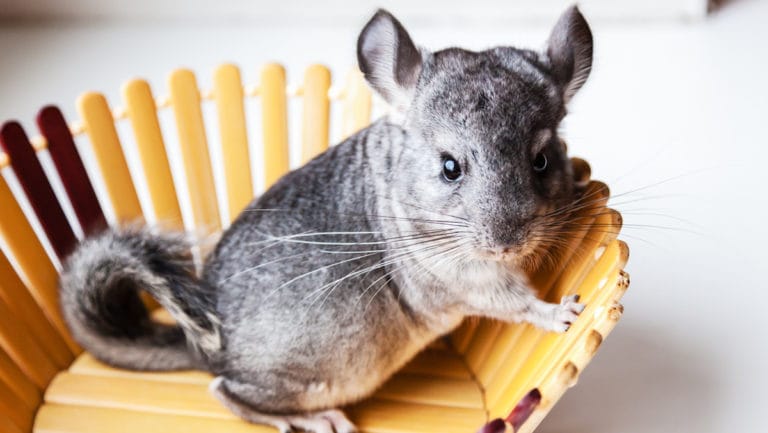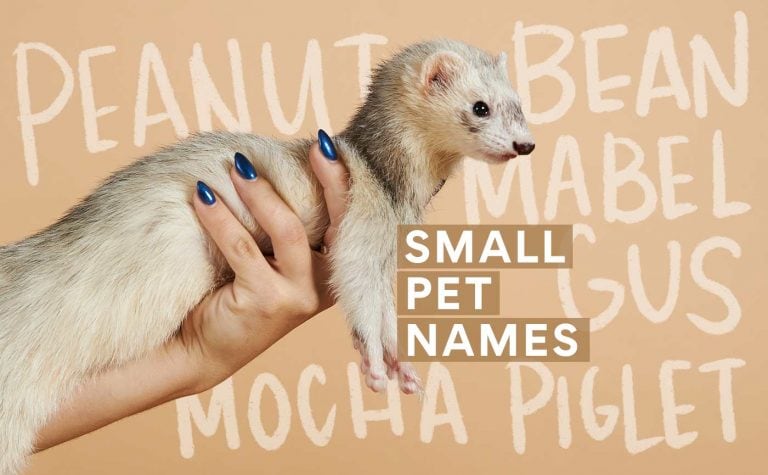Q.
Why do chinchillas shed?
A.
Chinchillas are constantly renewing their coats. As new fur grows in, old fur is shed. This helps with temperature regulation. Chinchillas will shed more at the change of seasons.
In the spring/summer as temperatures rise, the chinchillas will shed more fur as a way to have better ventilation and air circulation within their coat. A combination of high humidity and temperatures in the 80s-Fahrenheit may cause heatstroke, so temperature regulation is very important. In some chinchillas when fur is not shed it forms mats close to the skin. This prevents air circulation within the fur and can lead to overheating. Shedding will help them stay a bit cooler.
By fall when the temperatures begin to drop, chinchillas are in various stages of shedding their summer coats and replacing them with denser winter coats to provide more warmth. Combing your chinchilla with grooming combs will help remove some of the shedding fur. After combing and mat removal, more dead fur may rise to the surface and can either be combed out during the next few days or left for the chinchilla to shed.
Clean fur and repeated coat renewal contribute to overall chinchilla health.
Chinchillas can slough fur trying to avoid capture. When fur is sloughed, large chunks of fur suddenly come loose. If a chinchilla is grabbed by anything or anyone, clumps of fur may stay behind as the chinchilla escapes.
Research has shown that there are about 60 hair strands per hair follicle on chinchillas. Each hair strand has colored bands from top to bottom. The bottom band closest to the skin is called the “underfur.” The middle band, which may be a lighter shade (and even white in many mutations), is called the “bar.” The top band is called the “veiling.” Chinchillas also produce single, longer guard hairs. You can see them if you hold your chinchilla at eye level and look across the fur.
If you want to determine the fur density, hold your chinchilla and gently blow into its fur. If the fur blows down and does not bounce back up and you see quite a bit of skin, the chinchilla’s fur is considered less dense. A chinchilla with a less dense coat will not shed as much as one with denser fur.
Because chinchillas shed all year long, it is normal to find hairs in and around the cage every day. It is abnormal to have patches of fur missing from your chinchilla. Usually bald spots can be attributed to fur chewing, a fungus infection or bickering among cagemates where fur is pulled out or sloughed.
By: Marty Hull
Featured Image: Via Marty Hull
Share:
